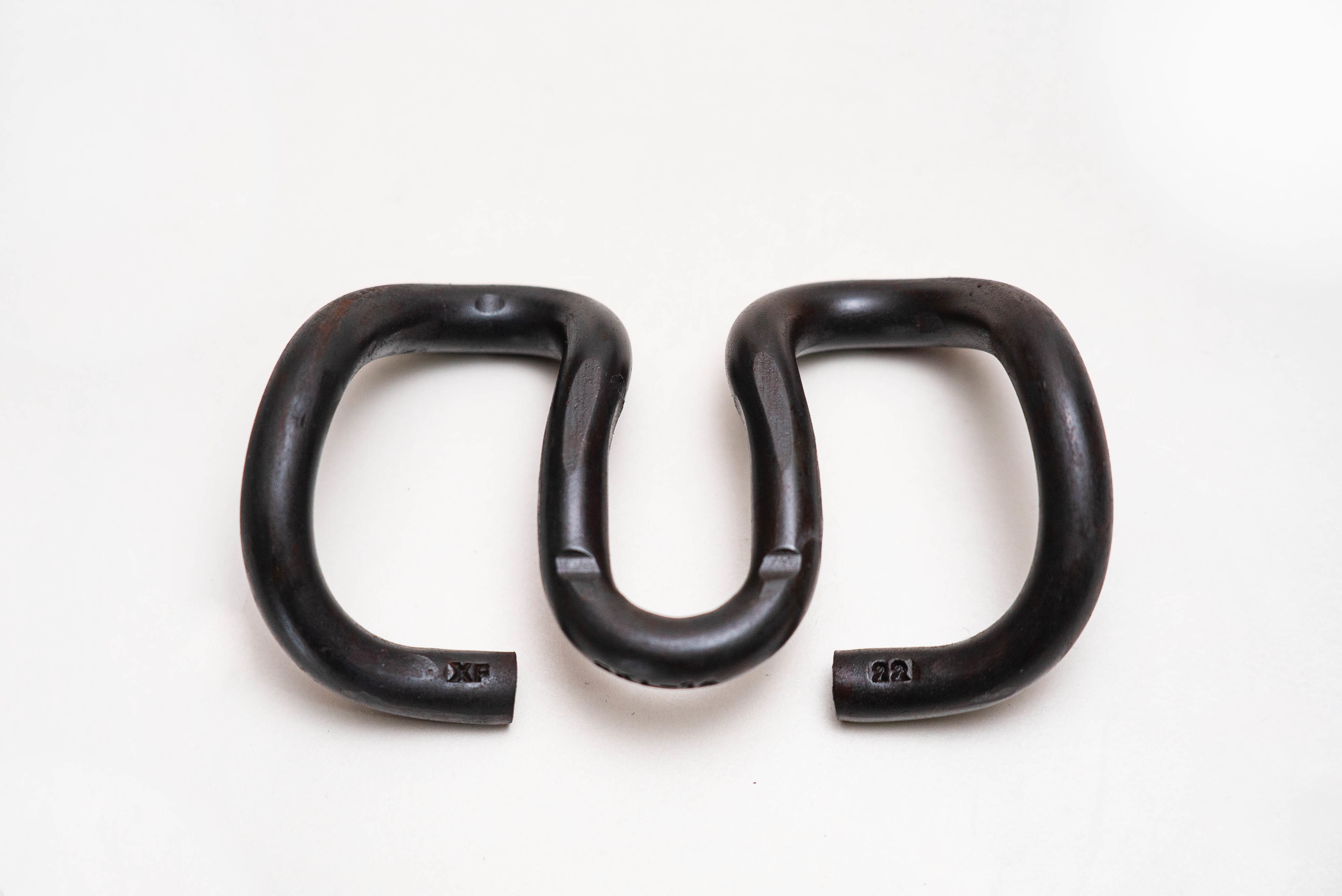Choosing the Right Rail Track Spike: A Comprehensive Guide to Enhance Rail Safety and Efficiency
Apr 26,2025
Choosing the Right Rail Track Spike: A Comprehensive Guide to Enhance Rail Safety and Efficiency Table of Contents Understanding Rail Track Spikes Importance of Choosing the Right Spike Types of Rail Track Spikes Steel Spikes Plastic Spikes Composite Spikes Material Considerations for Rail Track Spikes Spike Sizes and Dimen

Choosing the Right Rail Track Spike: A Comprehensive Guide to Enhance Rail Safety and Efficiency
Table of Contents
- Understanding Rail Track Spikes
- Importance of Choosing the Right Spike
- Types of Rail Track Spikes
- Material Considerations for Rail Track Spikes
- Spike Sizes and Dimensions
- Installation Techniques for Rail Track Spikes
- Maintenance Best Practices for Rail Track Spikes
- Frequently Asked Questions
Understanding Rail Track Spikes
Rail track spikes are critical components in the railway infrastructure, serving as fasteners that secure the rails to the ties (sleepers). Their primary function is to maintain the alignment and stability of the rail, which is essential for safe and efficient train operations. Spikes are subjected to various forces, including vertical loads from passing trains, lateral forces due to track movement, and thermal expansion. Therefore, understanding the purpose and function of rail track spikes is the first step in choosing the right type for your railway needs.
Importance of Choosing the Right Spike
Selecting the appropriate rail track spike is vital for several reasons. An incorrect choice can lead to increased maintenance costs, potential safety hazards, and decreased operational efficiency. The right spike will ensure that the rail remains secure and aligned despite the stresses of heavy train traffic and environmental conditions. Furthermore, using high-quality spikes can reduce the frequency of repairs and replacements, ultimately saving money in the long run.
Types of Rail Track Spikes
When it comes to rail track spikes, several types are commonly used, each with distinct advantages and applications. Understanding the differences can help you select the most suitable option for your project.
Steel Spikes
Steel spikes are the most traditional and widely used type in rail applications. They offer excellent strength and durability, capable of withstanding heavy loads and harsh environmental conditions. Steel spikes are typically treated to resist corrosion, extending their lifespan. Their reliability makes them a preferred choice for high-traffic rail lines.
Plastic Spikes
Plastic spikes are an innovative alternative that has gained popularity in recent years. Made from high-density polyethylene or other durable polymers, plastic spikes are lightweight and resistant to corrosion, making them an excellent choice for environments prone to moisture. They are often used in conjunction with concrete ties and can reduce the overall weight of the track assembly, which may be advantageous in specific applications.
Composite Spikes
Composite spikes combine the benefits of both steel and plastic. These spikes are made from a mixture of materials designed to optimize performance, providing strength, durability, and resistance to environmental factors. Composite spikes are particularly effective in areas where changes in temperature and humidity can affect traditional materials.
Material Considerations for Rail Track Spikes
When choosing rail track spikes, material characteristics play a crucial role in performance and longevity. Here are several key considerations:
1. **Corrosion Resistance**: Exposure to moisture and chemicals can lead to rapid deterioration of metal spikes. Look for spikes with coatings or treatments that enhance corrosion resistance.
2. **Load-Bearing Capacity**: Different materials have varying load-bearing capacities. Ensure the spikes can handle the specific weight requirements of your rail system.
3. **Thermal Expansion**: Materials expand and contract with temperature changes. Choose spikes that can accommodate these changes without compromising the integrity of the rail system.
4. **Impact Resistance**: Spikes should be able to withstand the impact forces generated by trains, especially in high-speed applications.
Spike Sizes and Dimensions
Selecting the right size and dimension of rail track spikes is essential for proper installation and functionality. Spike sizes are typically determined by:
- **Rail Width**: The width of the rail dictates the dimensions of the spike. Ensure the spike fits snugly against the rail for optimal support.
- **Tie Thickness**: The thickness of the ties will also influence the spike length. A correctly sized spike will penetrate the tie sufficiently without causing damage.
- **Application Considerations**: Different applications may require different spike sizes. For example, mainline tracks might need longer and thicker spikes compared to sidings.
Installation Techniques for Rail Track Spikes
Proper installation techniques are crucial for ensuring the integrity and longevity of rail track spikes. Here are some best practices to follow:
1. **Pre-drilling**: Pre-drilling holes in the ties can help prevent splintering and ensure accurate spike placement.
2. **Alignment**: Ensure that the rails are properly aligned before inserting spikes. Misalignment can lead to increased wear and safety issues.
3. **Use of Tools**: Employ the right tools for installation, such as spike drivers or pneumatic tools, to ensure consistent and secure placement.
4. **Inspection**: After installation, inspect each spike to confirm proper placement and alignment.
Maintenance Best Practices for Rail Track Spikes
Regular maintenance is essential to prolong the life of rail track spikes. Implement the following practices:
1. **Routine Inspections**: Conduct periodic inspections to identify loose or damaged spikes. Early detection can prevent larger issues down the line.
2. **Replacement Schedule**: Establish a replacement schedule based on the type of spikes used and traffic levels. This proactive approach can minimize downtime.
3. **Keep Records**: Maintain detailed records of spike conditions and replacements to track performance over time.
4. **Environmental Considerations**: Monitor the environmental conditions around the rail line. Excessive moisture or chemical exposure may necessitate more frequent inspections and replacements.
Frequently Asked Questions
What are rail track spikes made of?
Rail track spikes are commonly made of steel, plastic, or composite materials, each offering unique advantages in terms of strength, durability, and environmental resistance.
How do I know which type of spike to choose?
Selecting the right type of spike depends on factors such as the rail line's traffic levels, environmental conditions, and the materials of the ties. Consult with industry experts or refer to technical specifications to make an informed decision.
Can I install rail track spikes myself?
While it is possible to install rail track spikes yourself, professional installation is recommended to ensure proper alignment and secure fastening. If you lack experience, consider hiring professionals for the job.
How often should I inspect rail track spikes?
Regular inspections should be conducted at least twice a year, with more frequent checks in high-traffic areas or under extreme weather conditions. Early detection of issues can help prevent costly repairs.
What is the lifespan of rail track spikes?
The lifespan of rail track spikes varies based on material, environmental conditions, and traffic levels. Steel spikes may last several years with proper maintenance, while plastic or composite spikes may have different longevity.
Conclusion
Choosing the right rail track spike is a crucial decision that significantly impacts the safety and efficiency of your railway system. By understanding the various types of spikes, their materials, sizes, and installation techniques, you can ensure a robust and reliable track infrastructure. Regular maintenance and inspections will further enhance the lifespan and performance of your rail track spikes. By following this comprehensive guide, you will be equipped to make informed decisions that meet your specific needs and contribute to safe and effective railway operations.
Recommended
There is one sheet production line and two high-precision engraving machines, with an annual production capacity of 6 million railway special height adjustment pads.
Electrostatic spraying workshop
There is one electrostatic spray equipment production line and one spray paint production line, with an annual production capacity of 10,000 tons.
Contact Us


